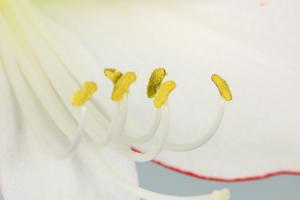What Does a Plant Cell Look Like?
The plant cell is the basic unit of life in plants, and it is responsible for maintaining the plant's essential functions. A plant cell is a complex structure made up of several different parts, each with its unique function. In this article, we will explore the different components that make up a plant cell and what they look like.
The Cell Wall
One of the most distinctive features of plant cells is the cell wall. The cell wall is a rigid layer surrounding the cell membrane that supports and protects the plant cell. It is made up of cellulose and provides a barrier against physical damage and invasion by disease-causing pathogens. The cell wall gives plant cells their boxy shape, and it is visible under a microscope as a thick layer surrounding the cell.
The Cell Membrane
The cell membrane is a thin layer located just inside the cell wall, and it regulates the movement of substances in and out of the cell. It is made up of phospholipids and proteins and is selectively permeable, meaning it allows only specific substances to pass through. Under a microscope, the cell membrane appears as a thin, delicate layer surrounding the cell.
The Nucleus
The nucleus is the control center of the cell and contains the plant cell's DNA. It is surrounded by a double membrane called the nuclear envelope, which separates the nucleus from the rest of the cell. Inside the nucleus, the DNA is organized into chromosomes, which contain the genes that control the plant's growth and development. The nucleus is visible under a microscope as a large, round structure located in the center of the cell.
The Cytoplasm
The cytoplasm is the fluid-filled space between the cell membrane and the nucleus. It contains various organelles, such as mitochondria, chloroplasts, vacuoles, and ribosomes, which perform different functions that are essential for the plant cell's survival. The cytoplasm appears as a colorless, gel-like substance that fills the entire interior of the cell.
The Mitochondria
Mitochondria are organelles that generate energy for the plant cell. They are responsible for breaking down glucose into usable energy through a process called cellular respiration. Under a microscope, mitochondria appear as small, oval-shaped structures scattered throughout the cytoplasm.
The Chloroplasts
Chloroplasts are organelles that are responsible for photosynthesis in plant cells. They contain chlorophyll, a pigment that absorbs sunlight and converts it into usable energy. Chloroplasts are visible under a microscope as green, disc-shaped structures scattered throughout the cytoplasm.
The Vacuoles
Vacuoles are organelles that store water, nutrients, and waste products in plant cells. They help maintain the plant's turgor pressure, which is essential for supporting the plant's stem and maintaining its upright posture. Under a microscope, vacuoles appear as large, round, fluid-filled sacs located in the cytoplasm.
Conclusion
In conclusion, a plant cell is a complex structure made up of many different parts, each with its unique function. From the cell wall and membrane to the nucleus, mitochondria, chloroplasts, and vacuoles, each organelle plays a crucial role in the plant's survival. Understanding the different components of a plant cell is essential for understanding how plants grow, develop, and function.

 how many times do yo...
how many times do yo... how many planted tre...
how many planted tre... how many pine trees ...
how many pine trees ... how many pecan trees...
how many pecan trees... how many plants comp...
how many plants comp... how many plants can ...
how many plants can ... how many plants and ...
how many plants and ... how many pepper plan...
how many pepper plan...































